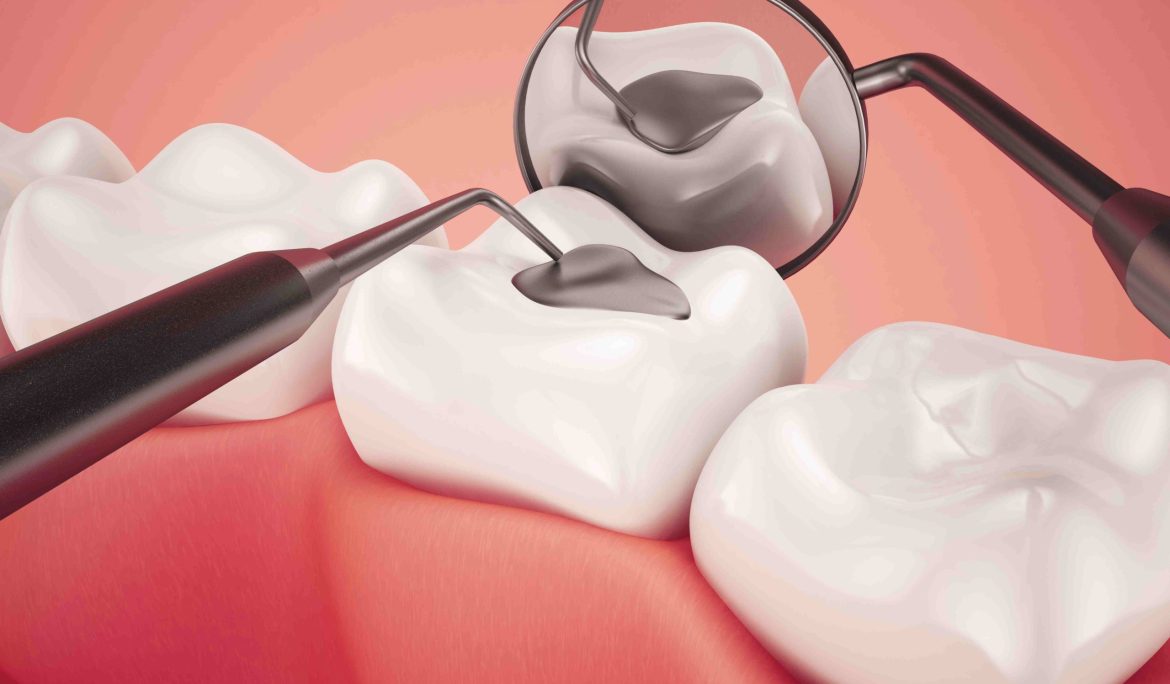A dental filling is a standard procedure for the treatment of a cavity that helps restore the shape of the tooth and prevent further damage from the disease process.
A dental filling is a standard procedure for the treatment of a cavity that helps restore the shape of the tooth and prevent further damage from the disease process.
Here are examples of times when you need a filling:
When you have tooth decay
After a tooth has been broken due to trauma and you want the shape restored
After increased erosion due to careless handling like biting hard foods,biting nails, opening a soda bottle
Tooth sensitivity from exposure of the inner layer of the tooth structure.
There are no contraindications to the use of a filling, only restrictions like when there is pain on your tooth or when the dental x-ray shows that the cavity goes all the way to the innermost part of the tooth, the pulp.
In such cases, a root canal treatment has to be done first before the tooth can have a filling. Also when you have a really big cavity, an equally big filling may serve the purpose in the short term.
However, in the long term, the tooth may need a dental crown to prevent the tooth from fracturing since the little tooth structure left after removing all the decay on the tooth means structural weakness and thus very brittle.A dental crown is a tooth-shaped “cap” that is placed over a tooth to cover the tooth to restore its shape and size, strength, and improve its appearance.
WHAT ARE THE DIFFERENT TYPES OF FILLINGS?
Fillings can majorly be divided into temporary and permanent fillings. A temporary filling as the name suggests is not meant to serve for a long time, it is mostly used in between root canal treatment sessions because they can easily be removed. These include zinc oxide eugenol cement commonly referred to as kalzinol. A permanent filling serves for a longer period of time and they include gold,silver amalgam, glass ionomer cement, composite
Gold- most durable, most expensive, colour does not match the tooth and thus mostly used for the back teeth.
Silver amalgam- nearly as strong as gold, costs less, grey in colour, most likely to stain over time . Its main application is in big cavities.
Glass ionomer cement- this contains fluoride which helps in the prevention of tooth decay, it is white in colour though not very similar to the tooth and is mostly used in regions of the mouth with a lot of saliva thus difficult to get dry
Composite- this is tooth coloured,durable and very aesthetic since it closely resembles the tooth.
WHAT IS THE PROCEDURE OF A DENTAL FILLING?
You are first numbed, a little injection, relatively painless. This is to ensure you are as comfortable as possible during the procedure and if this step goes well you end up not feeling anything during the entire procedure.
The part of the tooth with the decay is cleaned until only a healthy tooth structure is left.
The healthy tooth structure is shaped to ensure the filling material gets to every corner and is held properly. A lining material is put to protect the sensitive parts of the tooth.
The filling is then put on the tooth and shaped so that it resembles the shape of your natural tooth.
After shaping it, it is then checked if you are able to chew properly or you feel there is an area of the filling you are biting or is making you uncomfortable. The dentist deals with this issue and then refines the shape and smoothens it and that’s it! The procedure is finished
WHAT ARE THE BENEFITS OF GETTING A FILLING?
A filling prevents a tooth decay from further advancing
A filling restores the natural shape of the tooth.
A filling covers an area of the tooth where food was getting stuck preventing it from happening
A filling reduces tooth sensitivity
WHAT ARE THE COSTS OF A FILLING IN NAIROBI?
A filling in Nairobi costs between 4000 and 10,000 depending on the material of the filling, the tooth to be filled and any extra support needed for the filling.















